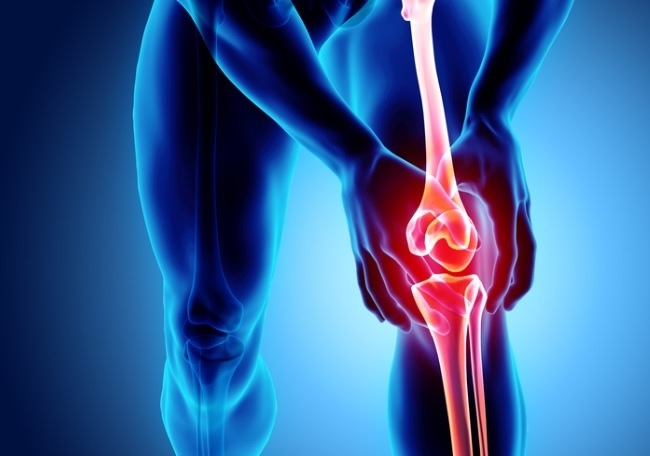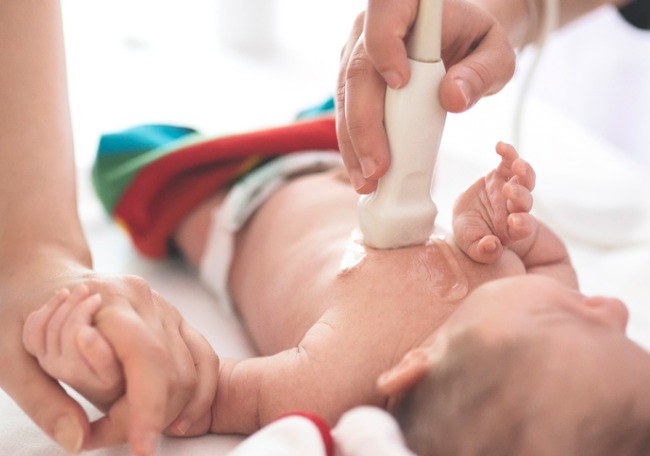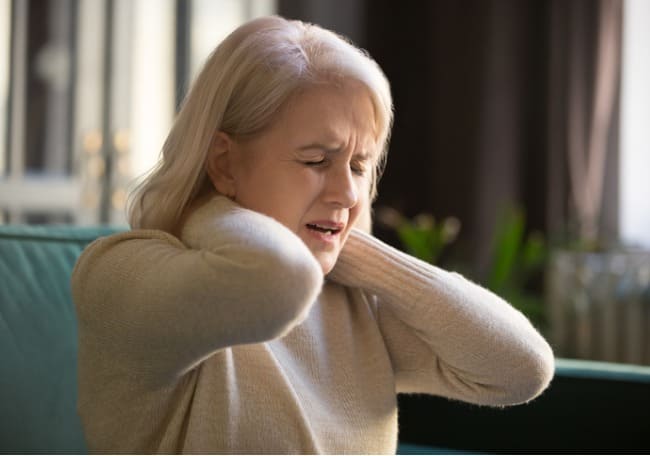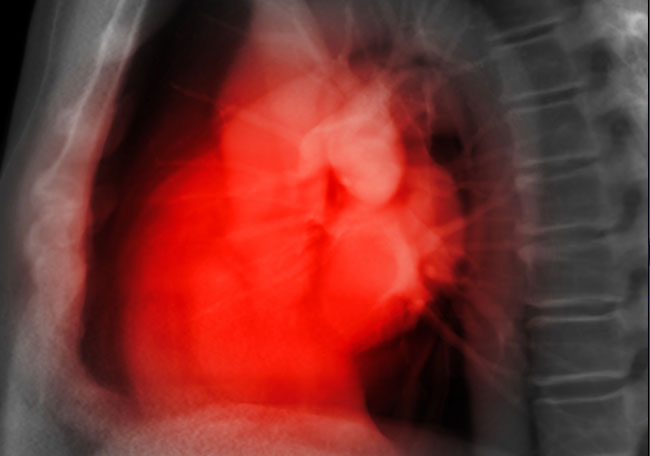Hiperlaxitud articular
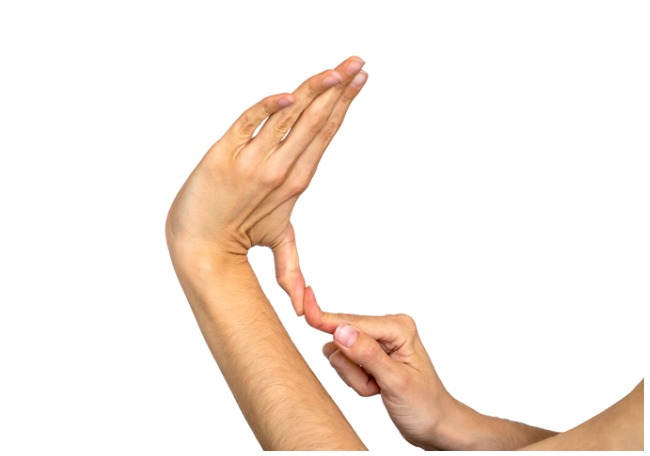
1. Adams F. On the Articulations. Glasgow Scotland UK: Good Press; 2021.
2. Van Dongen PW. Hypermobility in reproduction. S Afr J Obstet Gynaecol. 2006;12:38–43.
3. Kirk JA, Ansell BM, Bywaters EG. The hypermobility syndrome. Musculoskeletal complaints associated with generalized joint hypermobility. Ann Rheum Dis. 1967;26:419–425.
4. Denko C. Chernogubov's syndrome: a translation of the first modern case report of the Ehlers-Danlos syndrome. J Rheumatol. 1978;5:347–352.
5. Finkelstein H. Joint hypotonia. NY Med J. 1916;104:942–943.
6. Tinkle BT, Bird HA, Grahame R, et al. The lack of clinical distinction between the hypermobility type of Ehlers-Danlos syndrome and the joint hypermobility syndrome (a.k.a. hypermobility syndrome). Am J Med Genet A. 2009;149A:2368–2370.
7. Castori M, Tinkle B, Levy H, et al. A framework for the classification of joint hypermobility and related conditions. Am J Med Genet C Semin Med Genet. 2017;175:148–157.
8. Ochsner EH. IV. Congenital dislocation of hips with report of cases and description of a pelvis obtained three years after successful reduction by the Lorenz method. Ann Surg. 1902;36:198–221.
9. Whiteley R, Ginn K, Nicholson L, et al. Indirect ultrasound measurement of humeral torsion in adolescent baseball players and non-athletic adults: reliability and significance. J Sci Med Sport. 2006;9:310–318.
10. Molleson T. The case for signs of joint hypermobility on disarticulated human bones. Bioarchaeol Near East. 2018;12:33–45.
11. Kanazawa K, Hagiwara Y, Kawai N, et al. Correlations of coracohumeral ligament and range of motion restriction in patients with recurrent anterior glenohumeral instability evaluated by magnetic resonance arthrography. J Shoulder Elbow Surg. 2017;26:233–240.
12. MacConaill MA. The movements of bones and joints. V. The significance of shape. J Bone Joint Surg Br. 1953;35-B:290–297.
13. Chen K, Zhu W, Zheng Y, et al. A retrospective study to compare the clinical effects of individualized anatomic single- and double-bundle anterior cruciate ligament reconstruction surgery. Sci Rep. 2020;10:14712.
14. Gerometta A, Klouche S, Herman S, et al. The Shoulder Instability— Return to Sport After Injury (SIRSI): a valid and reproducible scale to quantify psychological readiness to return to sport after traumatic shoulder instability. Knee Surg Sports Traumatol Arthrosc. 2018;26:203–211.
15. Greenberg EM, Lawrence JT, Fernandez-Fernandez A, et al. Humeral retrotorsion and glenohumeral motion in youth baseball players compared with age-matched nonthrowing athletes. Am J Sports Med. 2017;45: 454–461.
16. Hahn T, Foldspang A, Vestergaard E, et al. Active knee joint flexibility and sports activity. Scand J Med Sci Sports. 1999;9:74–80.
17. Vera AM, Peterson LE, Dong D, et al. High prevalence of connective tissue gene variants in professional ballet. Am J Sports Med. 2020;48:222–228.
18. Hakim AJ, Cherkas LF, Grahame R, et al. The genetic epidemiology of joint hypermobility: a population study of female twins. Arthritis Rheum. 2004;50:2640–2644.
19. Malfait F, Hakim AJ, De Paepe A, et al. The genetic basis of the joint hypermobility syndromes. Rheumatology (Oxford). 2006;45:502–507.
20. Zweers MC, Kucharekova M, Schalkwijk J. Tenascin-X: a candidate gene for benign joint hypermobility syndrome and hypermobility type EhlersDanlos syndrome? Ann Rheum Dis. 2005;64:504–505.
21. Syx D, De Wandele I, Rombaut L, et al. Hypermobility, the Ehlers-Danlos syndromes and chronic pain. Clin Exp Rheumatol. 2017;35 Suppl 107: 116–122.
22. Paterson CR, McAllion S, Miller R. Heterogeneity of osteogenesis imperfecta type I. J Med Genet. 1983;20:203–205.
23. Voermans NC, Bonnemann CG, Hamel BC, et al. Joint hypermobility as a distinctive feature in the differential diagnosis of myopathies. J Neurol. 2009;256:13–27.
24. Castori M. Deconstructing and reconstructing joint hypermobility on an evo-devo perspective. Rheumatology. 2021;60:2537–2544.
25. Carter C, Wilkinson J. Persistent joint laxity and congenital dislocation of the hip. J Bone Joint Surg Br. 1964;46:40–45.
26. Nicholas JA. Injuries to knee ligaments. Relationship to looseness and tightness in football players. JAMA. 1970;212:2236–2239.
27. Rotes-Quérol J, Duran J, Subiros R, et al. La laxité articulaire comme facteur d'alterations de l'appareil locomoteur (Nouvelle étude 1971). Rhumatol Mai. 1972;24:179–191.
28. McNerney JE, Johnston WB. Generalized ligamentous laxity, hallux abducto valgus and the first metatarsocuneiform joint. J Am Podiatry Assoc. 1979;69:69–82.
29. Bulbena A, Duro J, Porta M, et al. Clinical assessment of hypermobility of joints: assembling criteria. J Rheumatol. 1992;19:115–122.
30. Beighton P, Solomon L, Soskolne CL. Articular mobility in an African population. Ann Rheum Dis. 1973;32:413–418.
31. Singh H, McKay M, Baldwin J, et al. Beighton scores and cut-offs across the lifespan: cross-sectional study of an Australian population. Rheumatology. 2017;56:1857–1864.
32. Chan C, Hopper L, Zhang F, et al. The prevalence of generalized and syndromic hypermobility in elite Australian dancers. Phys Ther Sport. 2018;32:15–21.
33. Nicholson LL, Chan C. The upper limb hypermobility assessment tool: a novel validated measure of adult joint mobility. Musculoskelet Sci Pract. 2018;35:38–45.
34. Ferrari J, Parslow C, Lim EJ, et al. Joint hypermobility: the use of a new assessment tool to measure lower limb hypermobility. Clin Exp Rheumatol. 2005;23:413–420.
35. Meyer KJ, Chan C, Hopper L, et al. Identifying lower limb specific and generalised joint hypermobility in adults: validation of the lower limb assessment score. BMC Musculoskelet Disord. 2017;18:514.
36. El-Garf AK, Mahmoud GA, Mahgoub EH. Hypermobility among Egyptian children: prevalence and features. J Rheumatol. 1998;25: 1003–1005.
37. Verhoeven JJ, Tuinman M, Van Dongen PW. Joint hypermobility in African non-pregnant nulliparous women. Eur J Obstet Gynecol Reprod Biol. 1999; 82:69–72.
38. Phan K, Nicholson LL, Hiller CE, et al. Prevalence and unique patterns of lower limb hypermobility in elite ballet dancers. Phys Ther Sport. 2020; 41:55–63.
39. Hakim A, Grahame R. A simple questionnaire to detect hypermobility: an adjunct to the assessment of patients with diffuse musculoskeletal pain. Int J Clin Pract. 2003;57:163–166.
40. Juul-Kristensen B, Schmedling K, Rombaut L, et al. Measurement properties of clinical assessment methods for classifying generalized joint hypermobility—a systematic review. Am J Med Genet C Semin Med Genet. 2017;175:116–147.
41. Pacey V, Tofts L, Adams RD, et al. Quality of life prediction in children with joint hypermobility syndrome. J Paediatr Child Health. 2015;51: 689–695.
42. Spanhove V, Van Daele M, Van den Abeele A, et al. Muscle activity and scapular kinematics in individuals with multidirectional shoulder instability: a systematic review. Ann Phys Rehabil Med. 2020;107:11–18.
Comentarios
Para ver los comentarios de sus colegas o para expresar su opinión debe ingresar con su cuenta de IntraMed.
